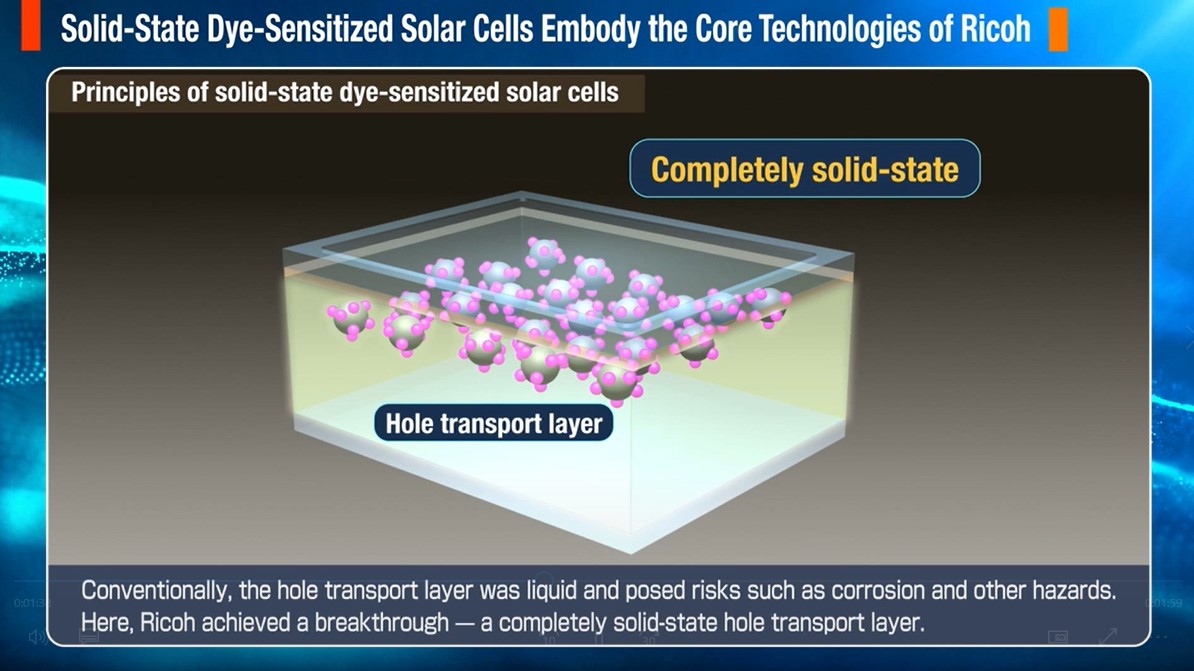- Home
- Ricoh's Technology
- Solid-State Dye-Sensitized Solar Cell
Solid-State Dye-Sensitized Solar Cell
Background
Owing to the development of ultralow-power consumption LSI (Large-Scale Integration) chips, various electronic components like sensors can be driven by a weak electric power source. Therefore, stand-alone power sources which allow power generation without any external power are expected to be put to more practical uses. Thus, all eyes are on energy harvesting technologies to generate power from ambient energy, including light, heat, and vibration.
Among stand-alone power sources, solar cells are a promising candidate because they generate electric power anywhere provided there is light. Amorphous silicon solar cells(*1) are known to generate relatively high electric power under weak light, such as indoor lighting. Yet, the electric power generated is still insufficient for several reasons, including the overall output.
Thus, the dye-sensitized solar cell (DSSC) comes into the limelight as a next-generation solar cell, which is capable of generating power efficiently even under scattered light or indoor lighting. A general dye-sensitized solar cell uses the absorption of visible light by a dye in order to generate electric power. It is made up of a transparent conductive substrate which has a porous layer consisting of nano (a billionth) titanium dioxide particles, a glass substrate which has metal film and an iodine electrolyte encapsulated between these substrates.
The DSSC has its own challenges: power generation efficiency needs to be improved further, and the liquid electrolyte poses a risk in terms of safety (iodine and organic solvents can be volatilized and leak) and durability (the electrolyte can peel off the organic dyes adsorbed on titanium dioxide). These issues have held back the DSSC from being taken to market.
Ricoh has however solved these issues by applying its organic photoconductor technology developed for its multifunction printers (MFPs). Ricoh has developed a DSSC consisting of only solid-state materials such as the electrolyte.
Characteristics of a Solid-State Dye-Sensitized Solar Cell
Device structure of solid-state dye-sensitized solar cell:
The solid-state DSSC is characterized by the hole transport layer, which consists of an organic p-type semiconductor(*2) and a solid additive. This solid-only structure poses no risk of corrosion or health hazards due to electrolyte or iodine leakage. The technical issues with general liquid-state solar cells have been resolved.
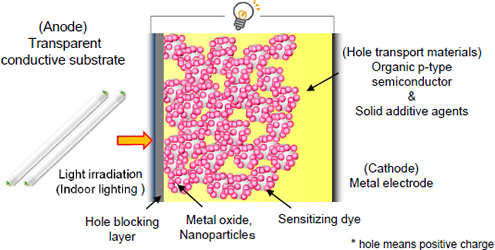 Figure 1: Device structure of a solid-state DSSC, developed by Ricoh
Figure 1: Device structure of a solid-state DSSC, developed by Ricoh
High power generation efficiency
Raising power generation efficiency requires improved voltage and current performance and reduced power loss. Ricoh has developed new technologies to gain higher power generation efficiency under weaker light sources.
- The new DSSC features a high open-circuit voltage (Voc, a theoretical maximum voltage) because the organic p-type semiconductor has an energy level deeper than that of iodine, which is generally used as an electrolyte in a liquid-state DSSC.
- The new DSSC features a high short-circuit current density (Jsc, a theoretical maximum current density) thanks to the organic dye chosen to suit the wavelengths of indoor light sources.
- The new DSSC features a high fill factor (FF, an index for power generation loss) thanks to the optimized solid-state additive and device structure.
The development efforts described above have resulted in high indoor power generation efficiency (see Figure 2).
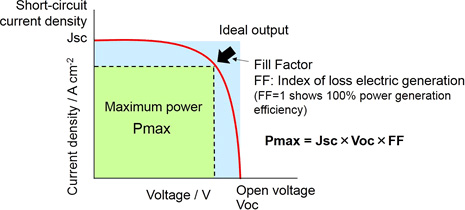 Figure 2: Power generation performance (current density – voltage)
Figure 2: Power generation performance (current density – voltage)
Solid-state DSSC module
Ricoh has developed a module that features multiple power generating devices (solid-state DSSCs) connected in series to achieve a high open circuit voltage. Figure 3 shows the specifications of a typical solid-state DSSC module product, which produces high output, even under low-intensity light.
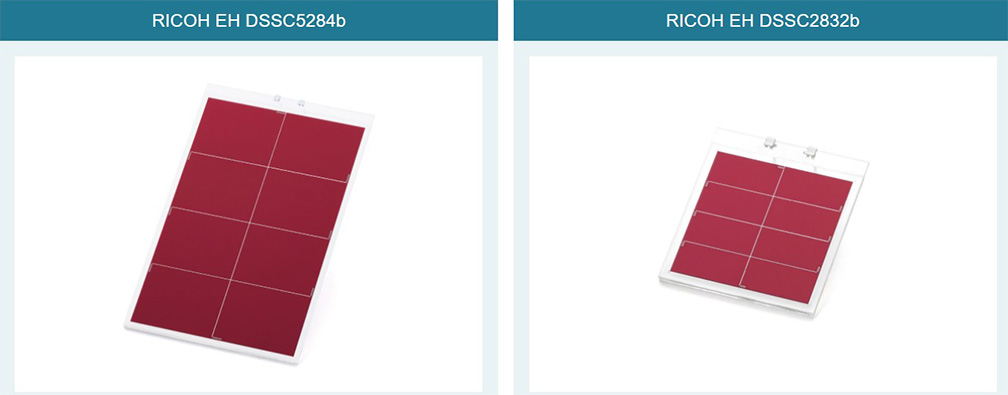
| Dimensions | 52mm × 84mm | 28mm × 32mm |
|---|---|---|
| Maximum output (Pmax) min. | 276μW | 48μW |
Electrical characteristics and conditions: 200 lx daylight white LED with color temp. of 25°C
Figure 3: Electrical properties and module sizes
Figure 4 shows the maximum output power (Pmax) and maximum operating voltage (Vmax) of a 28×32 mm module.
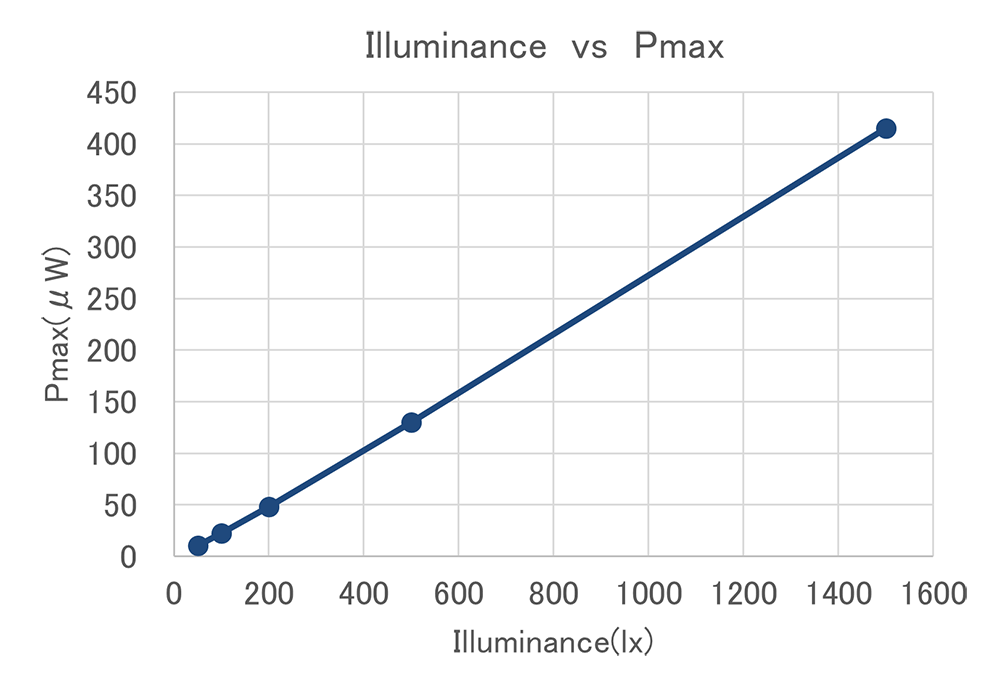
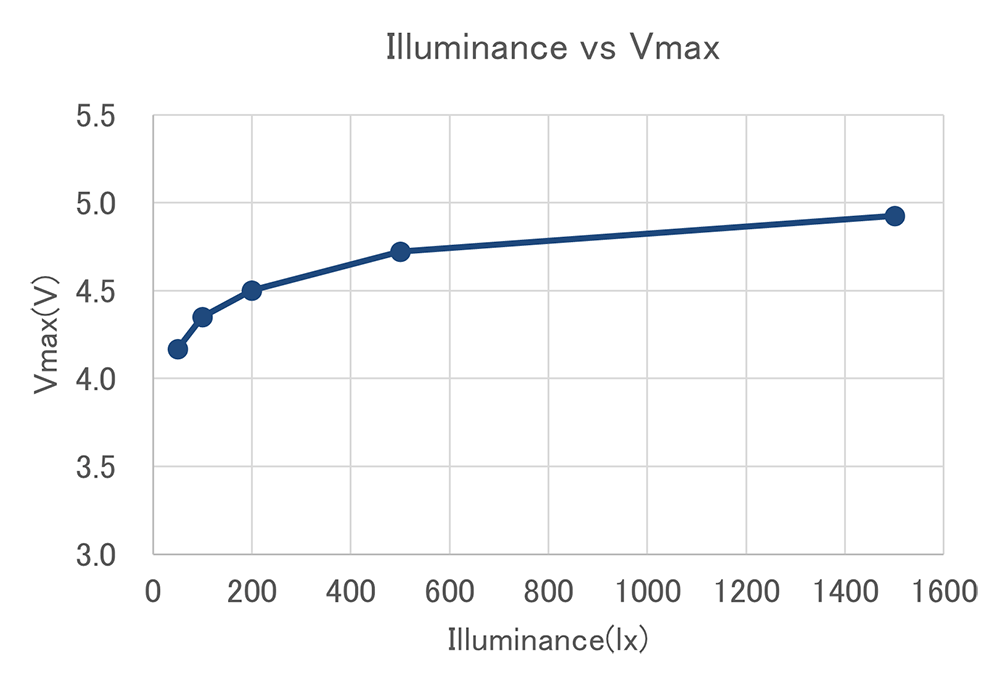
Figure 4: Properties of a 28×32 mm module
Expanding Applications of Solid-State DSSCs
People have increasing expectations of the IoT (Internet of Things)(*3) era. Ricoh believes that stand-alone power sources based on ambient energy (energy harvesting devices) will be increasingly significant. With a large number of sensors, changing conventional batteries would be time consuming and costly, making it even more important that sensors can obtain power from their surroundings. The same thing applies wherever regular power sources are unavailable. With its high power generating performance and high open circuit voltage, the solid-state DSSC module will efficiently charge secondary cells. Even under low illumination intensity, the DSSC module will work as a power supply for sensing devices (see Figure 5).
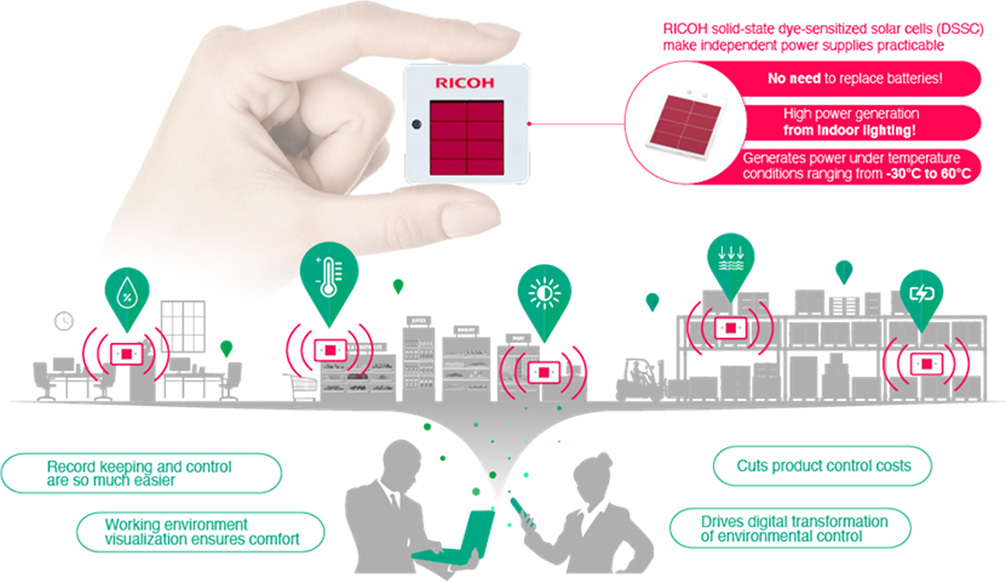 Figure 5: DSSC equipped sensing device
Figure 5: DSSC equipped sensing device
Ricoh is committed to expanding applications of the solid-state DSSC as a photovoltaic energy harvesting device.
- (*1)
- Amorphous silicon solar cell: A solar cell that has a thin silicon amorphous layer of chemical vapor phase epitaxy of silane gas on the substrate: An amorphous silicon solar cell has about a 1.8eV energy gap, and absorbs and generates short wavelength light of 700 nm or less. Amorphous silicon is mainly used for solar cells under natural indoor lighting as the output under weak light is high compared to crystalline silicon solar cells.
- (*2)
- Organic p-type semiconductor: An organic material having broad conjugated bonds (overlap of electron orbit of adjacent nucleus in molecule), which can electrify by moving electron holes (positive charges) on an electron orbit.
- (*3)
- Supercritical fluid carbon dioxide: Carbon dioxide is a supercritical fluid (in a state of substance under temperature and pressure above the critical point, and has properties of both gaseous diffusibility and solubility of liquid). Critical temperature is 31.1°C and critical pressure is 7.37MPa.
- (*4)
- IoT: As the Internet of Things (IoT) grows, increasingly everything will come equipped with sensors and telecommunications functions, and big data analysis of large amounts of intelligence emitted by sensors will be conducted.
- (September 28, 2021) Launch of new wireless RICOH EH Environment Sensor D201/202 requiring no battery replacement
- (May 13, 2021) Launch of new RICOH EH DSSC modules with 20% increase in power generation
- (February 4, 2020) Ricoh launches the world's first solid-state dye-sensitized solar cell modules
- (June 11, 2014) Ricoh Develops High-performance Complete Solid-State Dye-Sensitized Solar Cell Suitable for Indoor Lighting
Sorted by : field “Energy Creation” “Materials” | product type “Environment / Energy”
